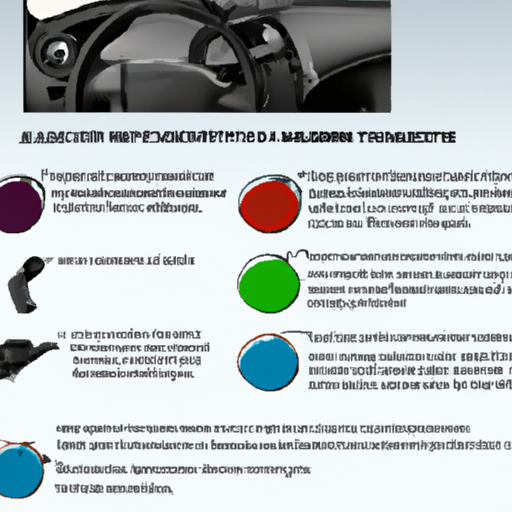Imagine you’re driving down the road, gripping the worn-out steering wheel of your trusted old car. The idea suddenly pops into your head: can I change my steering wheel? The answer is, yes, you absolutely can! Whether you’re looking to upgrade to a sleek and stylish design or simply replace a worn-out wheel, changing your steering wheel is a feasible and exciting endeavor. In this article, we will explore the ins and outs of replacing your steering wheel, including the benefits, the process, and how it can transform your driving experience. So, fasten your seatbelt and get ready to embark on a journey of customization and personalization.
Can I Change My Steering Wheel?

Factors to Consider Before Changing Your Steering Wheel
If you’ve ever wondered whether you can change your steering wheel, the answer is yes! Changing your steering wheel can be an exciting way to customize your vehicle and enhance your driving experience. However, before you dive into this project, there are a few important factors to consider.
Firstly, it’s crucial to understand the legal requirements in your jurisdiction. Different countries or states may have specific regulations regarding the types of steering wheels that are allowed in vehicles. Ensure that you research and comply with these regulations to avoid any legal issues down the road.
Additionally, you should consider the compatibility of the new steering wheel with your vehicle. It’s essential to select a steering wheel that is compatible with your car’s make and model. Keep in mind that certain vehicles may have specific wiring or airbag systems that need to be accounted for. Consulting your vehicle’s manual or seeking advice from a professional can help you determine which steering wheels are compatible with your car.
Finally, consider your own personal preferences and driving style. Do you prefer a sportier feel, a more ergonomic shape, or a unique design? Understanding your own preferences will help guide you in selecting the perfect steering wheel that will not only meet your needs but also enhance your overall driving experience.
Understanding the Legal Requirements
Before you embark on changing your steering wheel, it’s crucial to have a good understanding of the legal requirements surrounding this modification. Different jurisdictions have varying rules regarding the types of steering wheels that are permitted in vehicles.
One common requirement is related to the airbag system. Many countries require that vehicles are equipped with functioning airbags to ensure the safety of passengers. If your vehicle has an airbag system integrated into the steering wheel, it’s important to choose a replacement wheel that is compatible with the existing airbag system. Failure to do so could lead to serious legal consequences if you are involved in an accident.
Some jurisdictions also have regulations about the diameter of the steering wheel, its material, and even the presence of certain features such as telescopic adjustment or a horn. Be sure to research and understand these regulations to ensure you are in compliance with the law when changing your steering wheel.

Selecting the Right Steering Wheel
Now that you understand the legal requirements, it’s time to select the perfect steering wheel for your vehicle. When choosing a new steering wheel, there are a few key factors to consider.
One of the first things to think about is the material of the steering wheel. Common options include leather, suede, carbon fiber, and even wood. Each material provides a unique look and feel, so consider which one matches your style and preferences best.
Another important consideration is the design of the steering wheel. Do you prefer a more classic look or a sportier design? Some steering wheels feature perforated leather, colored stitching, or even a flat bottom for a sportier feel. Think about the overall aesthetic you want to achieve with your new steering wheel.
Additionally, pay attention to the grip thickness and shape of the steering wheel. Some steering wheels have a thicker grip, which can provide a more comfortable and secure hold, especially during spirited driving. The shape of the wheel, such as a D-shape or ergonomic contouring, can also contribute to the overall comfort and feel while driving.
Lastly, consider any additional features you may want, such as steering wheel controls for audio or cruise control functions. Many aftermarket steering wheels offer these features, allowing you to conveniently access various controls without taking your hands off the wheel.

Tools and Materials Needed
Before you get started, it’s important to gather all the necessary tools and materials for the steering wheel replacement process. Here are the basic tools and materials you’ll need:
- Socket wrench set
- Screwdriver set
- Steering wheel puller kit
- New steering wheel
- Vehicle-specific wiring harness (if needed)
- Torque wrench (optional, but recommended)
Having these tools and materials on hand will ensure a smooth and successful steering wheel replacement process.

Step-by-Step Guide to Changing Your Steering Wheel
Now that you have everything you need, let’s dive into the step-by-step process of changing your steering wheel. Remember to proceed with caution and consult your vehicle’s manual if needed.
Removing the Old Steering Wheel
-
Start by disconnecting the battery to ensure safety. Locate the negative (-) terminal and use a wrench to loosen and remove the cable.
-
Locate the center cap or emblem on the steering wheel and remove it. You may need a small screwdriver or pry tool to gently pop it off.
-
Once the center cap is removed, you will see a large nut holding the steering wheel in place. Use a socket wrench to loosen and remove the nut.
-
Next, identify the screws or bolts securing the horn button or airbag assembly. Remove these screws or bolts using the appropriate screwdriver or socket set.
-
Carefully disconnect any wiring harnesses or connectors that are attached to the horn button or airbag assembly.
-
With the wiring harnesses disconnected, you can now safely remove the old steering wheel. Use a steering wheel puller kit to apply even pressure and gently pull the wheel towards you until it releases from the steering column.
Choosing the New Steering Wheel
-
Take a moment to inspect and compare the old and new steering wheels side by side. Ensure that the new steering wheel matches the old one in terms of wiring connectors, mounting hole pattern, and any additional features you want to retain (such as cruise control buttons).
-
If necessary, install the vehicle-specific wiring harness onto the new steering wheel. This will allow you to connect the steering wheel controls and other electrical components seamlessly.
-
Ensure that the new steering wheel is clean and free from any dirt or debris before proceeding with the installation.
Preparing the New Steering Wheel
-
Position the new steering wheel in front of you and align it with the steering column.
-
Carefully slide the new steering wheel onto the steering column, ensuring that it engages with the splines correctly.
-
Once the steering wheel is securely in place, reinstall the large nut and use a torque wrench to tighten it according to the manufacturer’s specifications. This is crucial to ensure proper engagement and safety.
-
If your new steering wheel requires the use of a center cap or emblem, carefully attach it using the appropriate method (such as snapping it into place or using adhesive).
Installing the New Steering Wheel
-
Reconnect any electrical connectors or wiring harnesses that were previously disconnected, ensuring that they are securely attached.
-
If your new steering wheel includes a horn button or airbag assembly, follow the manufacturer’s instructions to correctly secure and install it.
Testing and Adjustments
-
Now that the new steering wheel is installed, it’s time to test and make any necessary adjustments.
-
Reconnect the battery by attaching the negative (-) cable to the battery terminal and tightening it with a wrench.
-
Start the vehicle and test the functionality of the steering wheel controls, horn, and any other features. Ensure that everything is working as intended.
-
Take your vehicle for a test drive to get a feel for the new steering wheel. Pay attention to its comfort, grip, and overall performance.

Additional Tips and Considerations
-
If you are unsure about any step of the process, consult a professional mechanic or refer to your vehicle’s manual for guidance.
-
Ensure that you take proper safety precautions, such as disconnecting the battery and using caution when handling the airbag system.
-
Consider retaining the old steering wheel and any associated components. This can be useful if you decide to sell your vehicle or want to revert to the original steering wheel in the future.
-
Before purchasing a new steering wheel, read reviews and research the quality and compatibility of the product. Opting for a reputable brand can ensure a reliable and long-lasting steering wheel.
-
Regularly inspect and clean your new steering wheel to maintain its appearance and functionality.
By following these steps and considering the factors outlined above, you can confidently change your steering wheel and enjoy a personalized driving experience. Don’t forget to consult the legal requirements, select the right steering wheel, and gather the necessary tools before undertaking this project. Happy driving!

